An autobiography is a form of narration about a person’s life written by that individual.
It is derived from a Greek word that means self-life-writing. The author of an autobiography provides a first-person account of his/her life. The details of the autobiography must be kept factual.
An autobiography may be written for several reasons. Some people may opt to write it to reflect on the journey that has led them to where they are, while others may simply want to stamp their story in history. An autobiography can also be written to connect and share with people. The author’s aim, in this case, may be to show readers that they are not alone in their struggles. Finally, an autobiography can also be written for therapeutic reasons. Writing it can help the author make sense of certain emotions and articulate them.
Free Templates
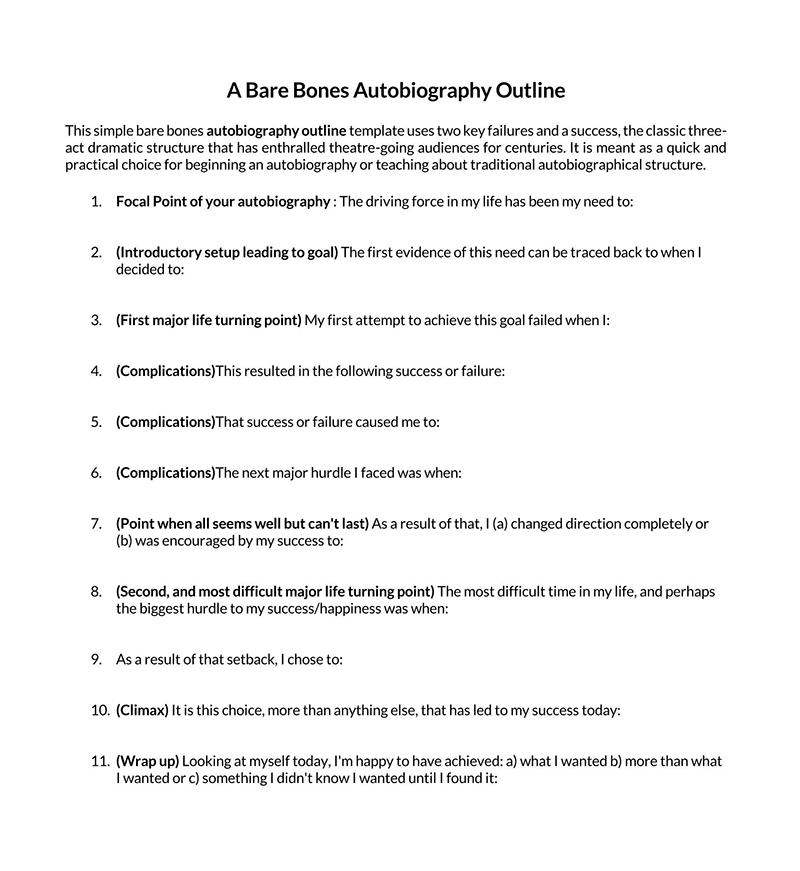
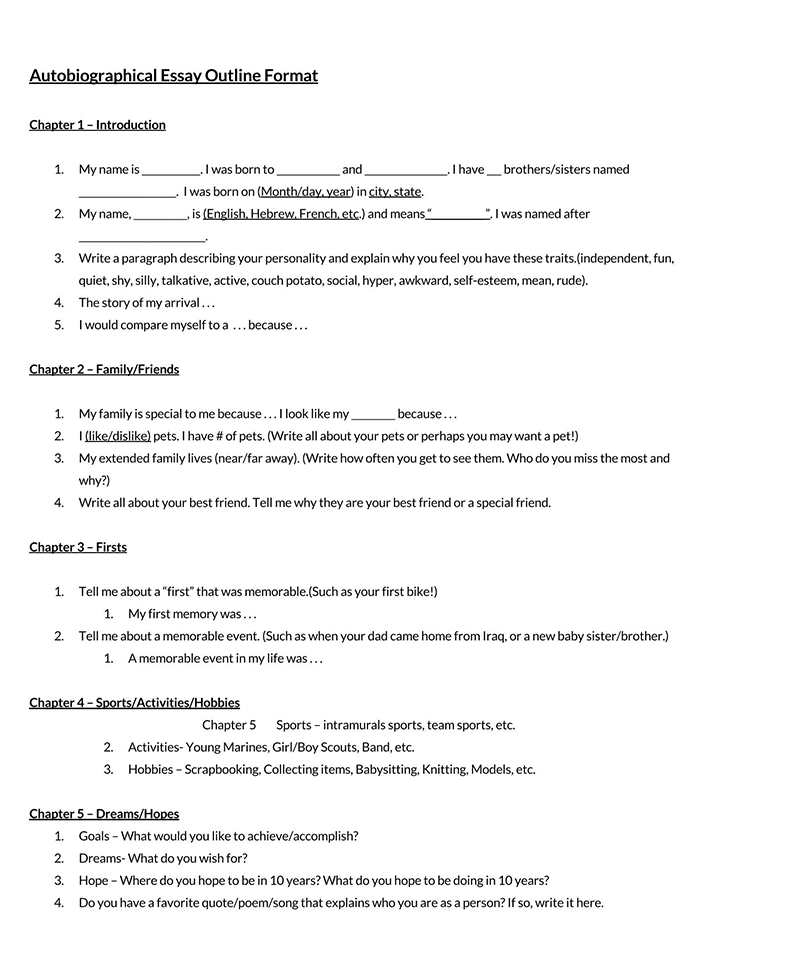
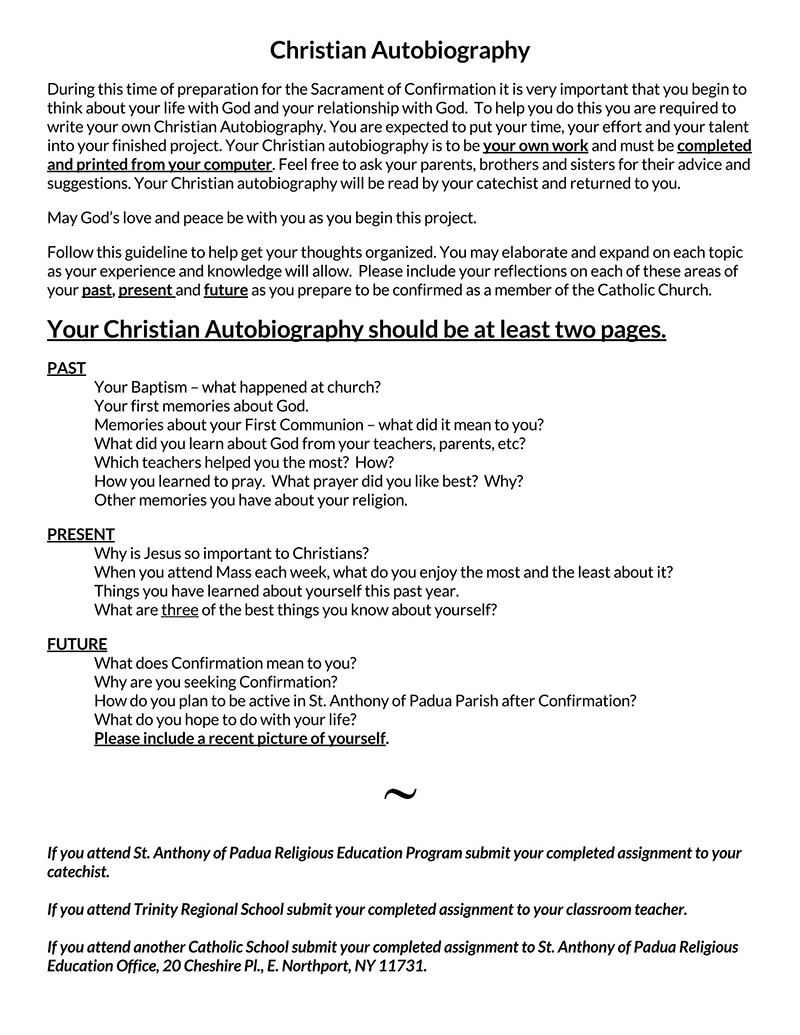
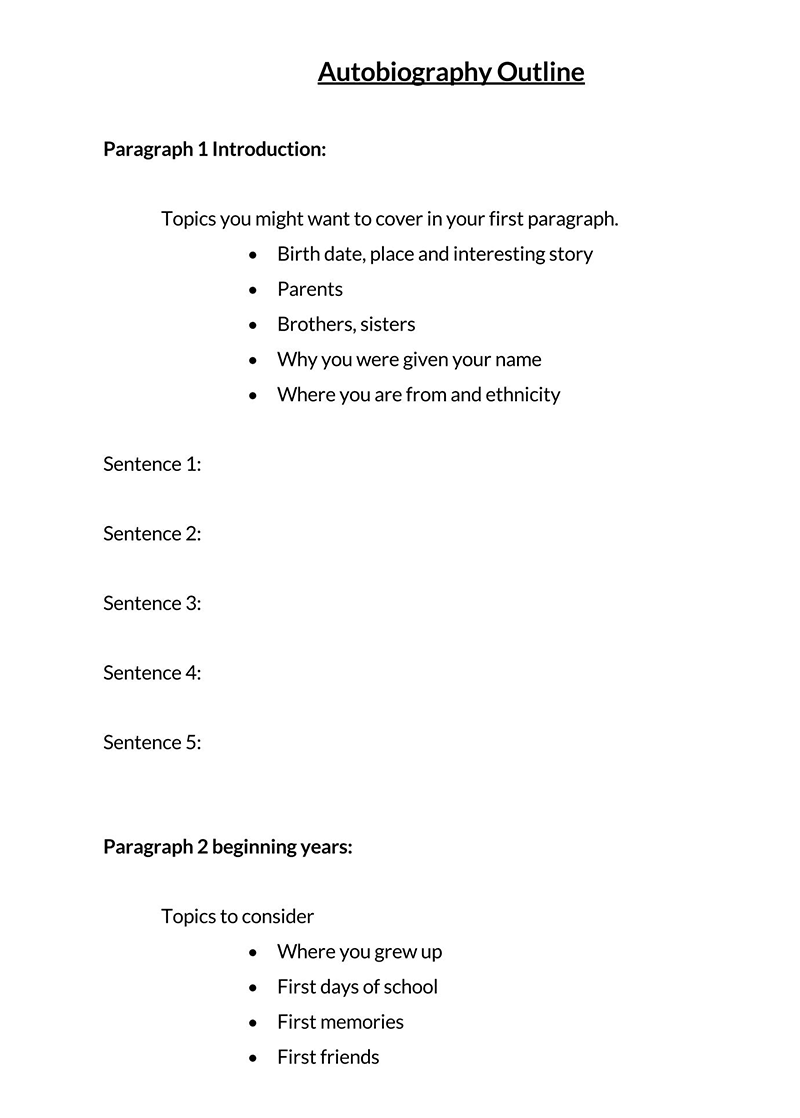
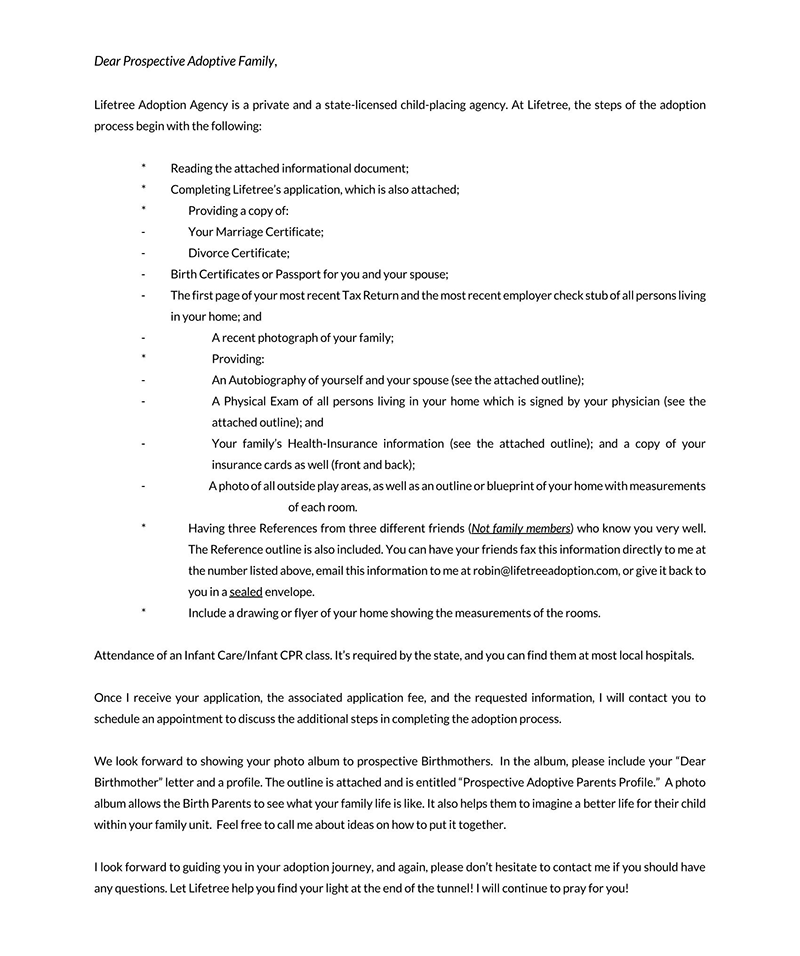
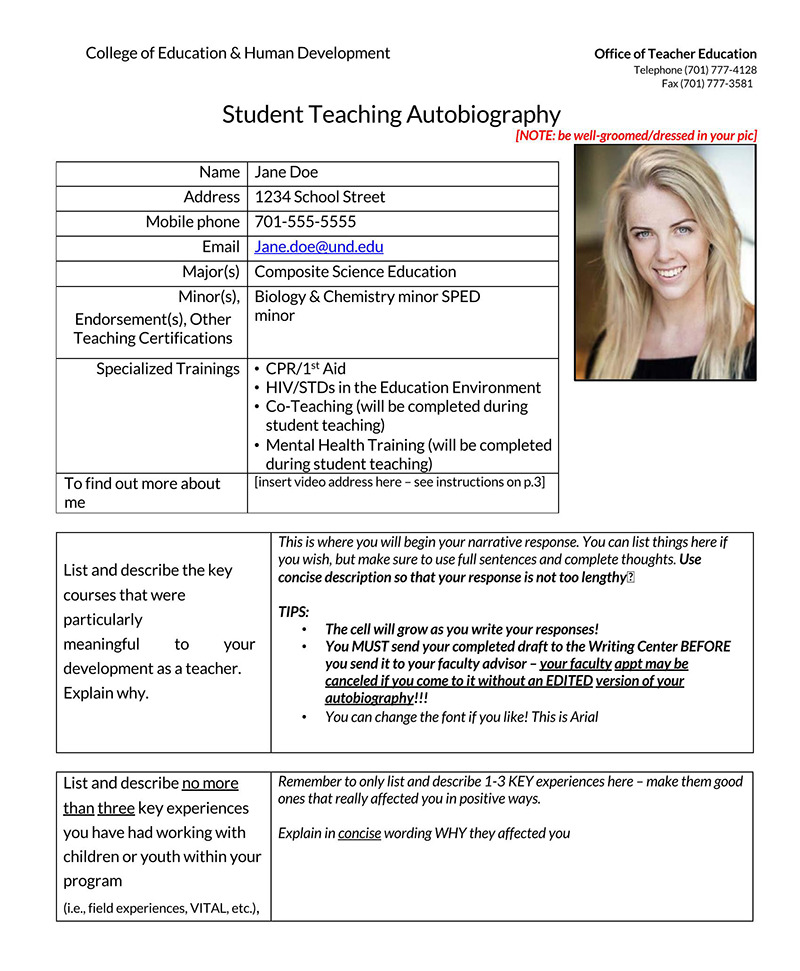
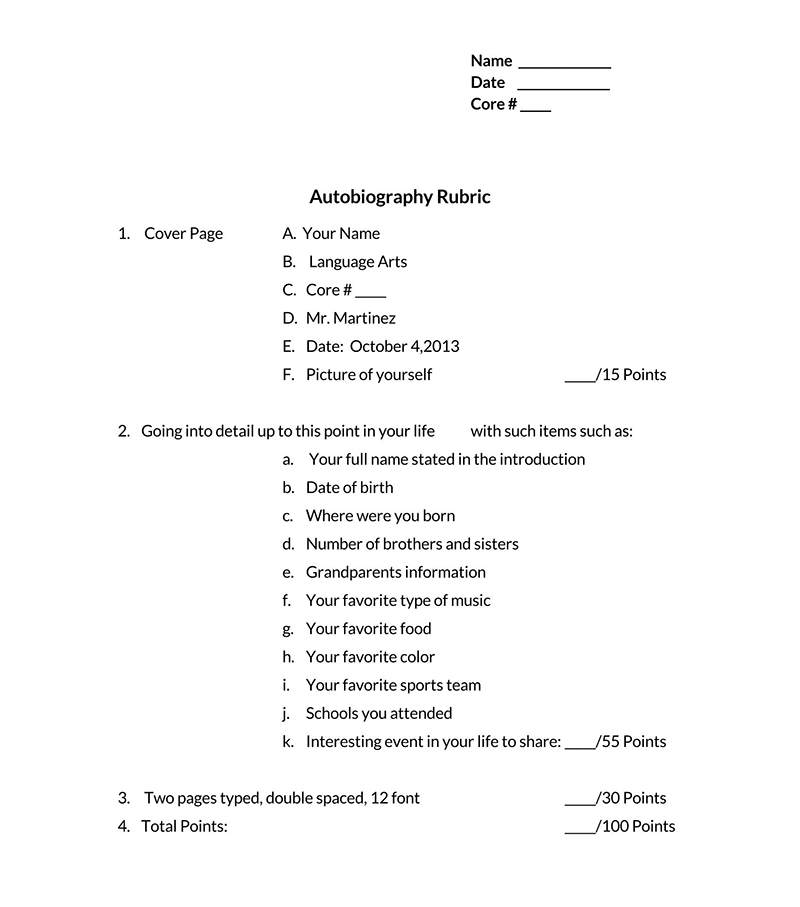
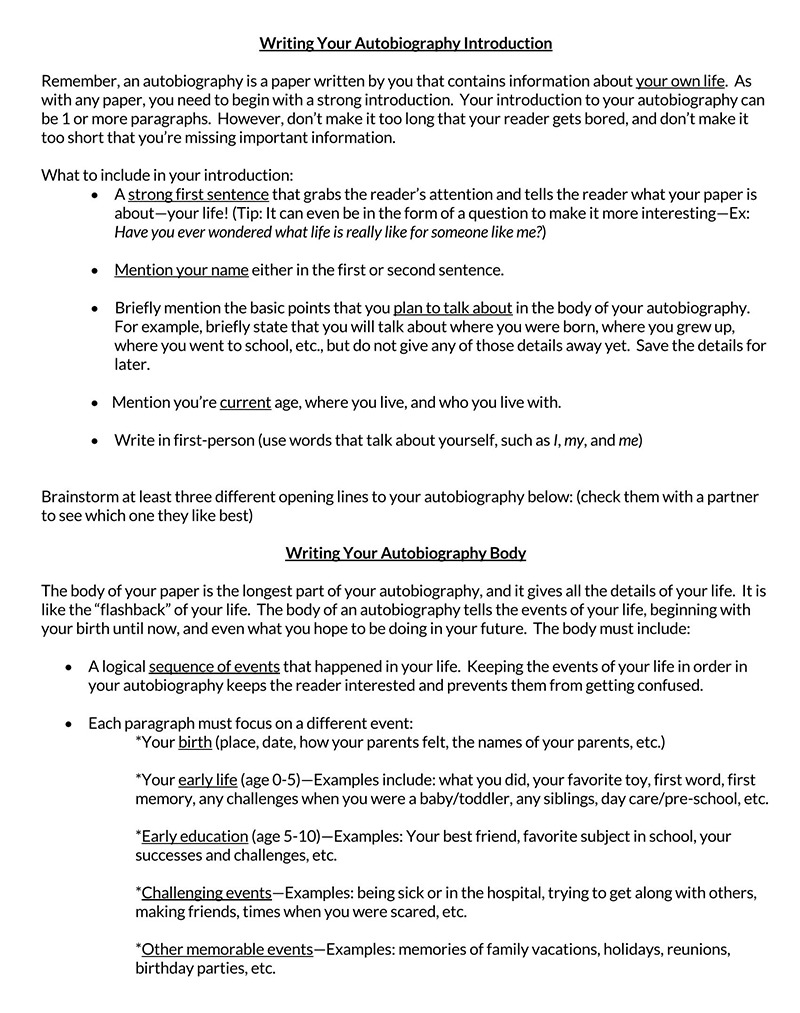
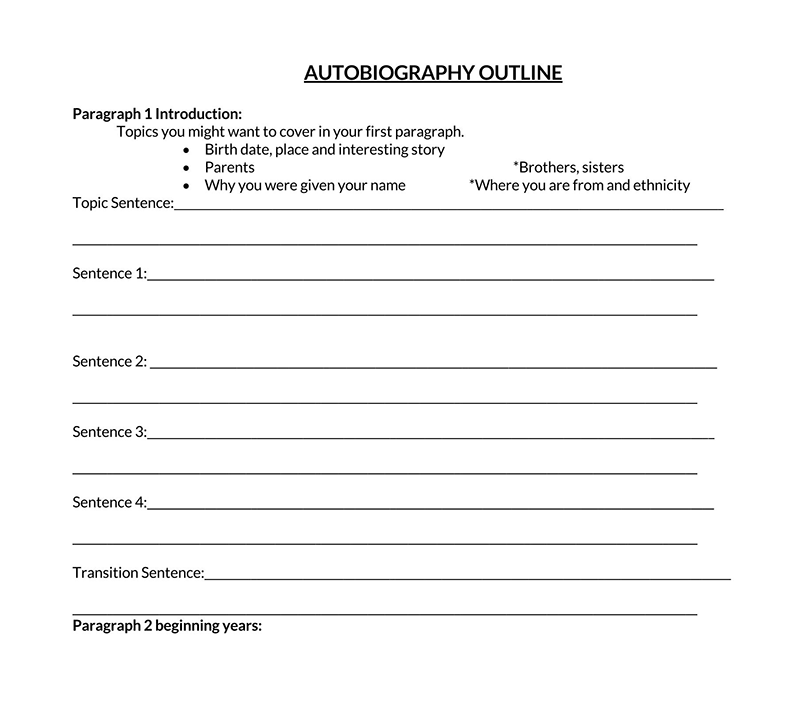
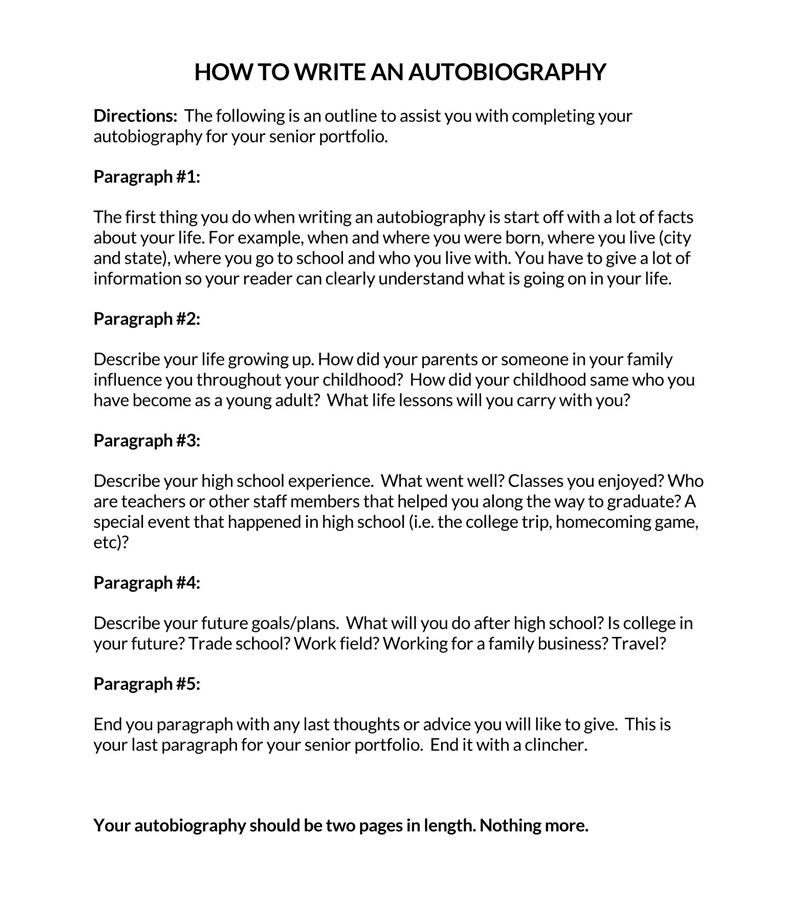
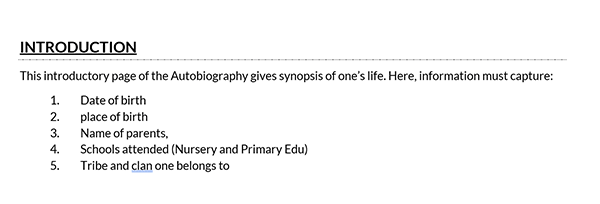
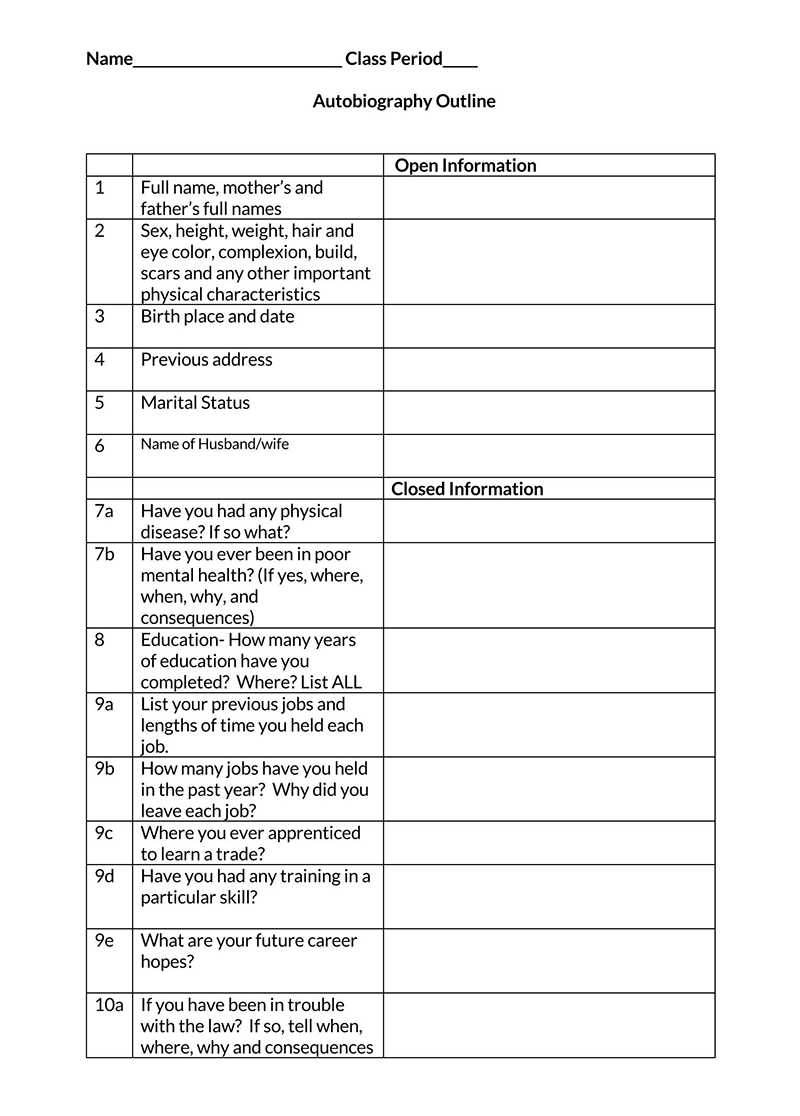
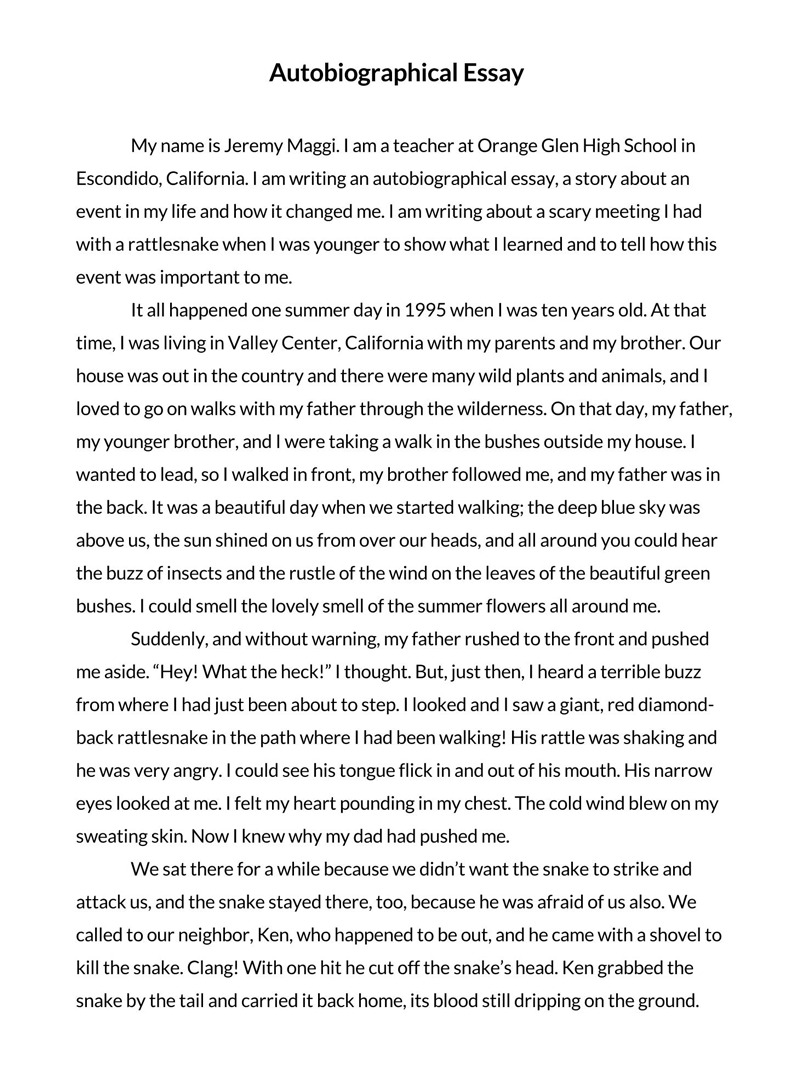
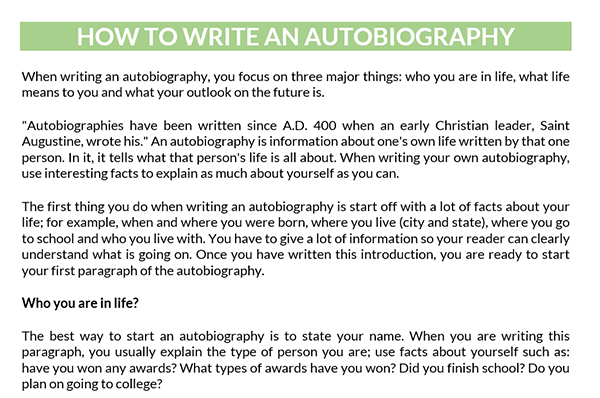
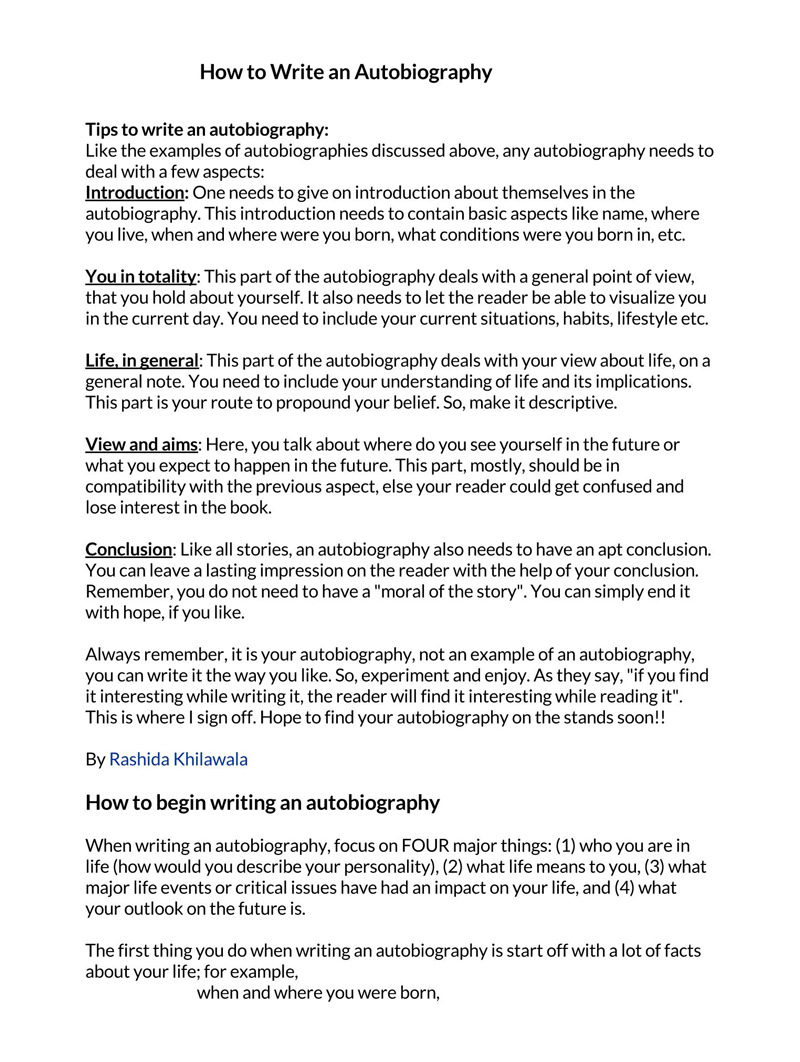
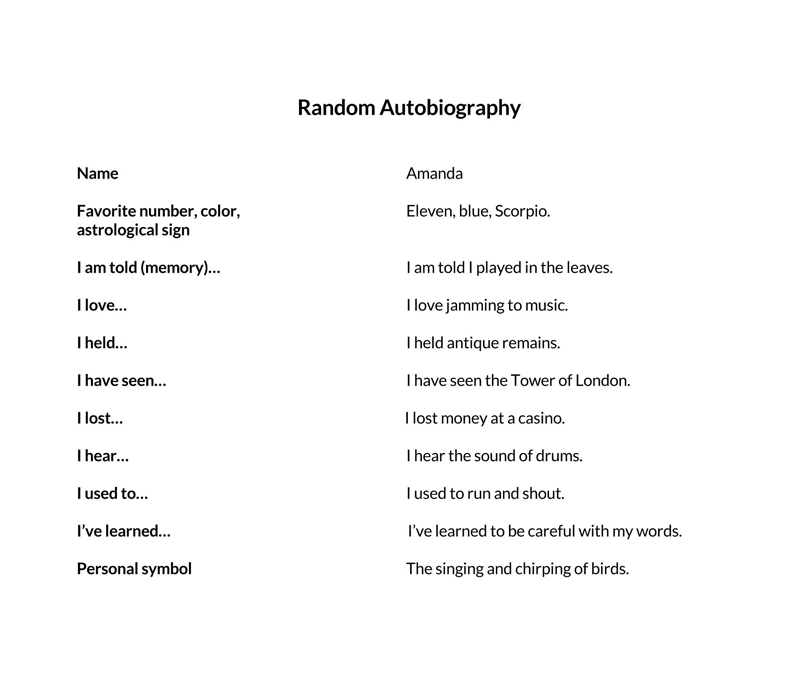

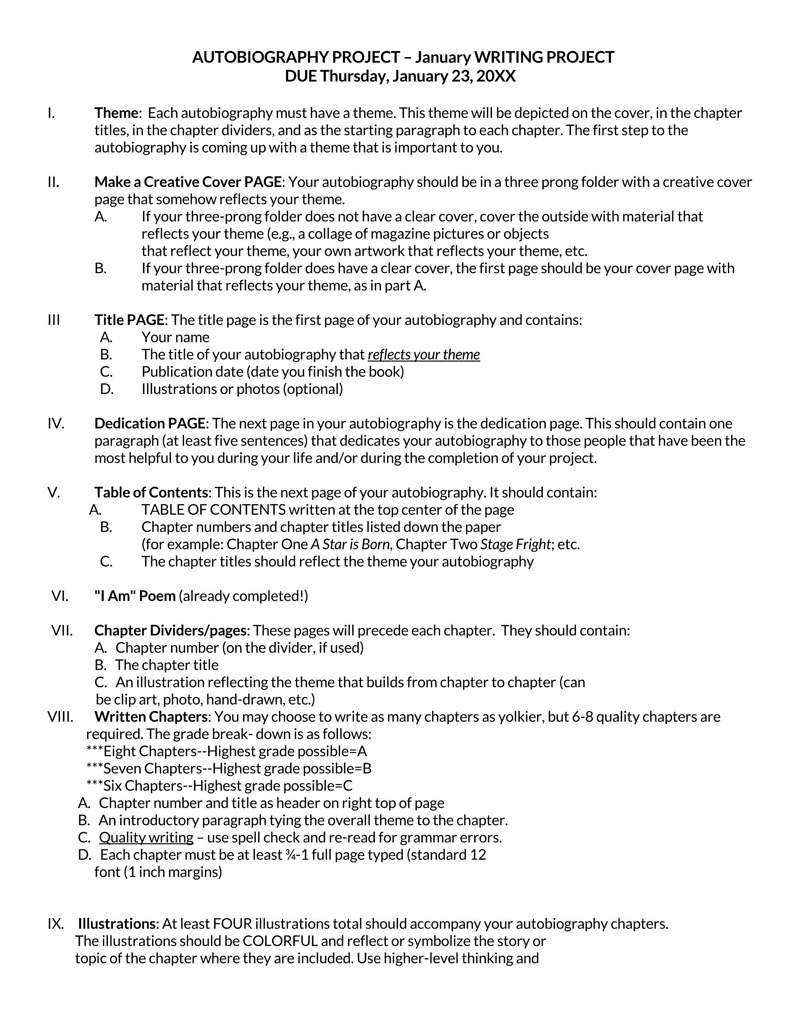
Autobiography Vs. Biography Vs. Memoir
There are clear differences between an autobiography and both a biography and a memoir. An autobiography and biography both tell the life story of an individual. However, the main difference is that a biography narrates the life story of someone else.
The following are other differences that can be used to distinguish between a biography and an autobiography:
- A biography may or may not require the approval of the author’s subject, whereas an autobiography requires no authorization.
- A biography provides a third-person account of an individual’s story; therefore, it requires a lot of fact-checking, whereas an autobiography provides a first-person account with little fact-checking required.
- A biography is mainly based on the facts of the subject’s story, whereas an autobiography can focus on the author’s thoughts and emotions.
- Finally, an autobiography can be written to express the author’s emotions and inform audiences of his/her story. On the other hand, a biography is mainly written to inform audiences of the subject’s story.
The main similarity between a memoir and an autobiography is that they are both the author’s first-hand accounts of his/her life story.
However, there are key differences that distinguish the two. The differences include the following:
- An autobiography provides a detailed account of the author’s entire life, whereas a memoir is one part of the author’s life story.
- Autobiographies are commonly written by famous, influential people who readers may be interested in. On the other hand, a memoir can be written by anybody famous or not. Readers may only be interested in the event or experience narrated in the memoir and not necessarily its writer.
- A memoir can move back and forth between time as its main focus is an event or experience, whereas often, an autobiography follows a chronological order to enhance coherence.
- Finally, autobiographies mainly focus on providing factual information and demonstrating how they relate to the author, whereas a memoir focuses on the author’s personal experience and internal reflection based on it
Types of Autobiography
There are various types of autobiographies. Understanding them enables the author to decide on what will be the main focus of the narration. The types of autobiography depend on what an author wants to include in the narration.
The following is are the types of autobiography that an individual can write:
Traditional autobiography
A traditional autobiography covers the entire life of the author. It details experiences from birth to the present time. It can be written for personal and public use. Authors of a traditional autobiography should be open to sharing who they are with the reader. When used for personal reasons, a this autobiography can be a reflection tool. It may also be used to inspire when written for the public.
Memoir
A memoir is more limited than a traditional autobiography as it focuses on a specific place, time, event, or relationship that influenced the author’s life or personality. Memoirs, therefore, narrate an important part of the author’s life. An individual can opt to write a memoir about a specific relationship that impacted the person’s view of the world, or childhood years that impacted who the individual is, among other areas of focus.
Personal essay
A personal essay is an intimate form of writing as compared to a memoir and traditional autobiography. It enables a person to share his/her life story to make the audience feel included in the narration. The author’s narration combines the story’s main focus or journey with the individual’s personal thoughts, emotions, and realizations.
Confessional
A confessional is written to share the author’s mistakes or sins with the hope that readers will avoid or learn from them. The author of a confessional is required to be open and honest with the reader about shortfalls that may be embarrassing, difficult, career, or life-changing. The writer should include lessons learned from the various mistakes highlighted in the confessional.
How to Structure an Autobiography?
When writing an autobiography, the author must consider the structure used. The structure used in writing an autobiography can help make the author’s story clear. It can also guide the reader through the author’s narration. Using the appropriate structure ensures that the author’s experiences are linked through the flow of the autobiography.
The following structure can be used when writing an autobiography:
Setup
First, an autobiography should have a setup to provide context for the author’s story. It describes the elements of the story, including fundamental facts like the place, time, individuals, and others. The setup helps the author build the mood and plot of the life story.
A good setup is a key to providing the reader with a mental picture of the author’s story. The setup may contain an introduction of the author’s family members, a description of the author’s home, early adult life, town, school, family customs, childhood experiences, or other facts that form the foundation of the author’s life.
Crisis
Next, the author should indicate crisis experiences or moments. Crisis indicates significant adversity faced by the author and crucial moments that led to the writer’s achievements or impacted his/her life trajectory. Crisis experiences/moments should be written clearly to ensure that the reader understands what the author has been through.
The author’s crises moments may include moving out of the author’s home state, parental divorce, divorce from a spouse, major sports injuries that ended the author’s career, dropping out of school, substance abuse, major twists in the author’s life like sudden life-changing events such as a car accident or loss of a child or major life achievements like winning a prestigious award for the first time such as an Olympic medal.
Resolution
Finally, the author must provide information on how the crisis was dealt with or what lessons were learned. The resolution of the autobiography forms the writer’s theme. The author’s resolution provides the reader with closure. The resolution may include the discovery of what the author values most in lifelike love and family, the discovery of new talents, or emotional growth arising from the crisis moment.
Step-By-Step Guide Writing an Autobiography
Writing an autobiography requires the author to follow a well-outlined step-by-step process. The process will help ease writing. It will also enable the author to speed up the writing process and ensure that details are indicated where the author intends for them to be.
The following can guide an author on how to write an autobiography:
Research your background
The autobiography should begin with the author gathering background details about his/her life. The background details gathered by the author will provide perspective on where to start the autobiography. The research conducted can centre around the author’s original home region, family history, or both. The author’s favourite movie or book can be used as an inspiration on how the background information can be used to start the autobiography.
Think about your childhood
Secondly, the author should consider his/her own childhood. The author should think about highlighting specific events and experiences of his/her childhood. The childhood experiences may be relatable to some and unique to others. Regardless, they help connect with the audience and provide a stable foundation for the autobiography.
The childhood experiences selected by the author should demonstrate the goal of the narrative. They should also contribute to symbolism in the author’s life. Finally, the author should address readers as though they know nothing about the childhood details highlighted in the autobiography.
Think about your culture
Culture should also be considered when writing an autobiography. Culture refers to social behaviors and norms that the author is accustomed to, like family values and behaviors. The custom may include the ways in which certain days, events, and months were celebrated, the customs that are practiced, food that is eaten, clothes that are worn, games that are played, phrases that are used, rituals that are practiced, or the language the author speaks. The information enables the author to share special moments or experiences that leave a lasting impression on readers.
The author should provide a detailed description to ensure that the reader can envision the memory of the cultural experience that is expressed in the autobiography. The experience should be indicated in its entirety; therefore, the author should indicate both the positive and negative aspects of the moment to help draw the reader into the atmosphere of the event.
Define your purpose/ core concept
Thirdly, the core concept of motivation for writing the autobiography should be defined. The purpose will form the core message to the reader. During the writing process, authors must keep the purpose in mind to avoid confusing the reader. The core concept of the autobiography acts as a filter by enabling the author to decide which details of his/her life should be included.
Establish the theme
Next, the author should establish the theme of the autobiography from the research conducted. The theme of the autobiography will enable the author to frame the narrative. It also ensures that the details highlighted by the author work together.
The following are two types of themes that an author can establish:
- One day as a theme: The author can opt to select one day as the theme. The regular routines of the day selected, activities, or experiences can be highlighted. A proper description of the day will ensure that the reader has a vivid picture of what it looked like or felt like. The author should ensure that the day described relates to the life experience shared in the autobiography.
- One event as a theme: The author can also opt for the story’s theme to be an event. An explanation of how the event impacted the author should be provided. The event will guide the setting of the author’s autobiography. It will form the central idea of the narrative.
Identify your audience
The author should identify the target audience of the autobiography. If the audiences are friends or family, then the author might consider how they may feel. Suppose the target audience is the wider public, then the author should consider how the autobiography will help them. The details of the autobiography should therefore be significant to the audience.
Create a timeline
A timeline of events and experiences should be created to ensure the highlighted scenarios follow a chronological order. It will also help the author arrange his/her thoughts and avoid confusion by the reader. The timeline will guide the chapters and sections of the autobiography. It also helps create the structure of the author’s life story.
Add details
Materials such as journals, letters, and photo albums can be used to add details to the author’s timeline. The reference materials will help the author provide an accurate account of events. The author should scrutinize each detail added to ensure that it aligns with the theme and purpose of the autobiography.
Biography Examples
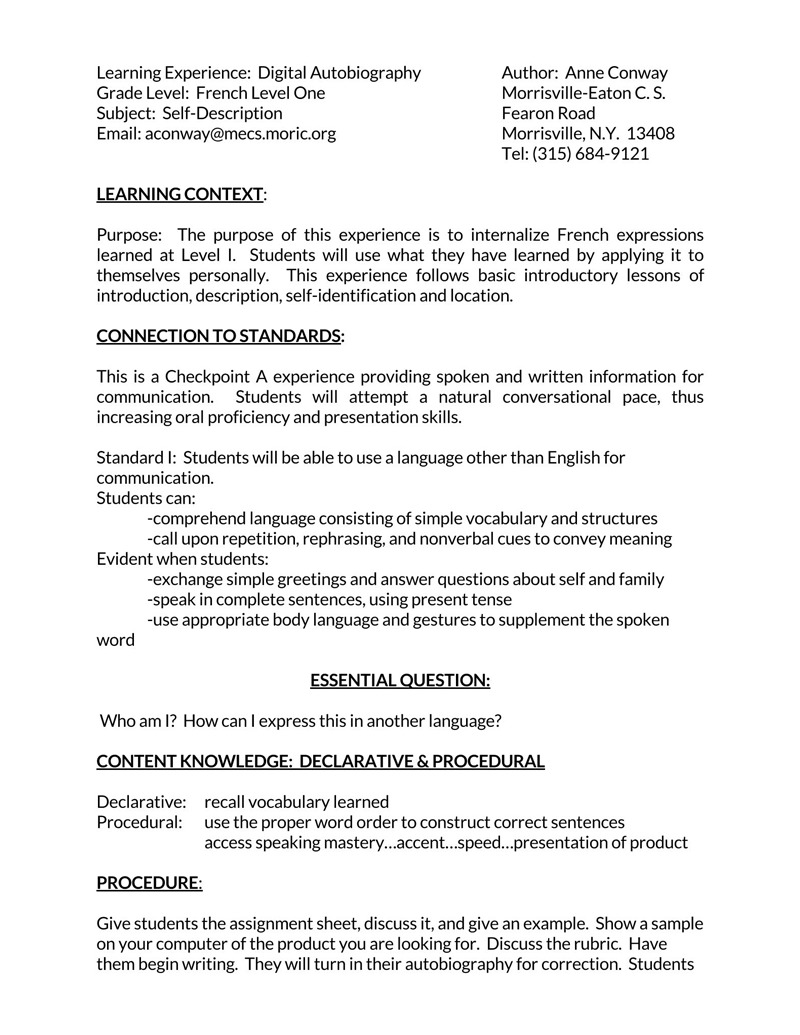
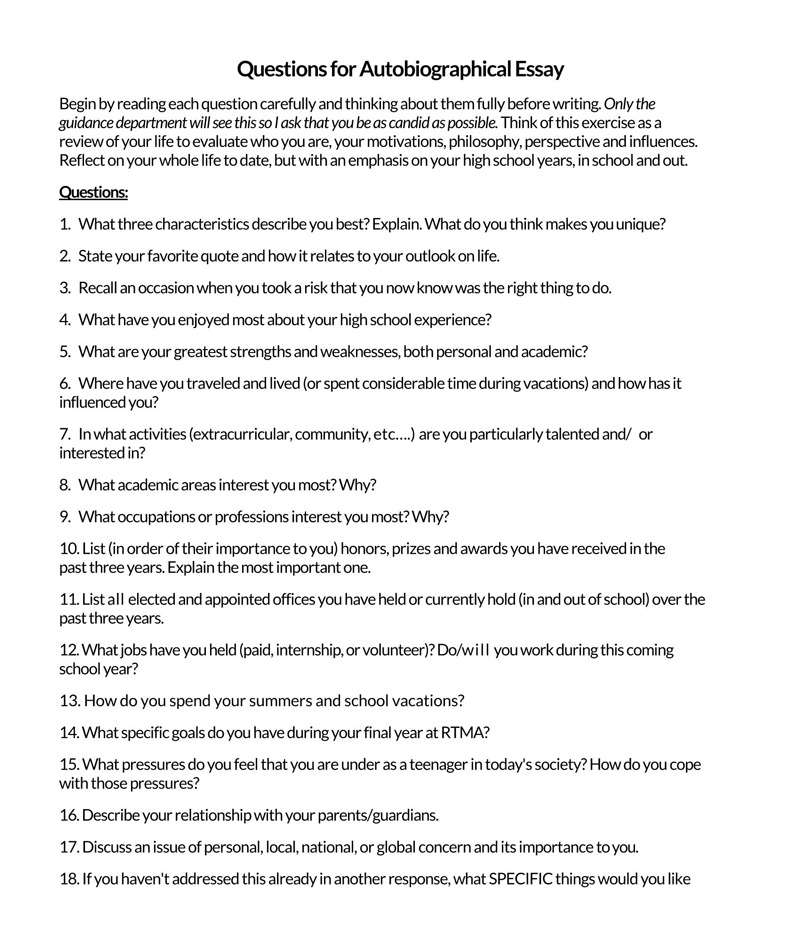
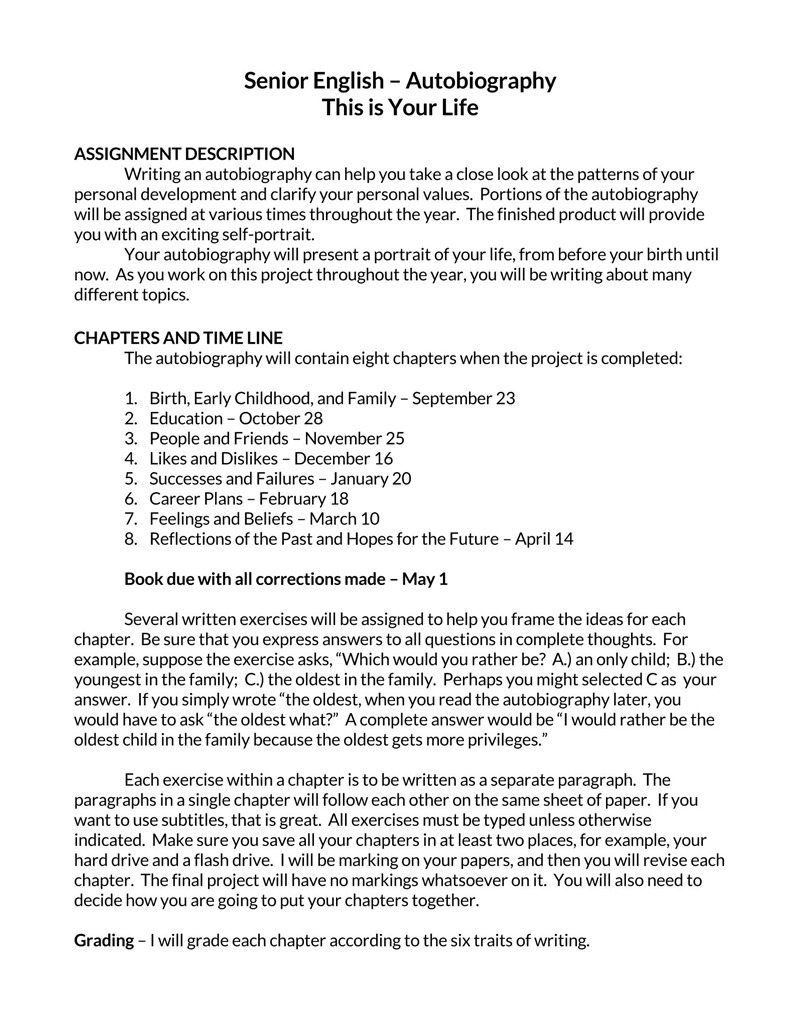
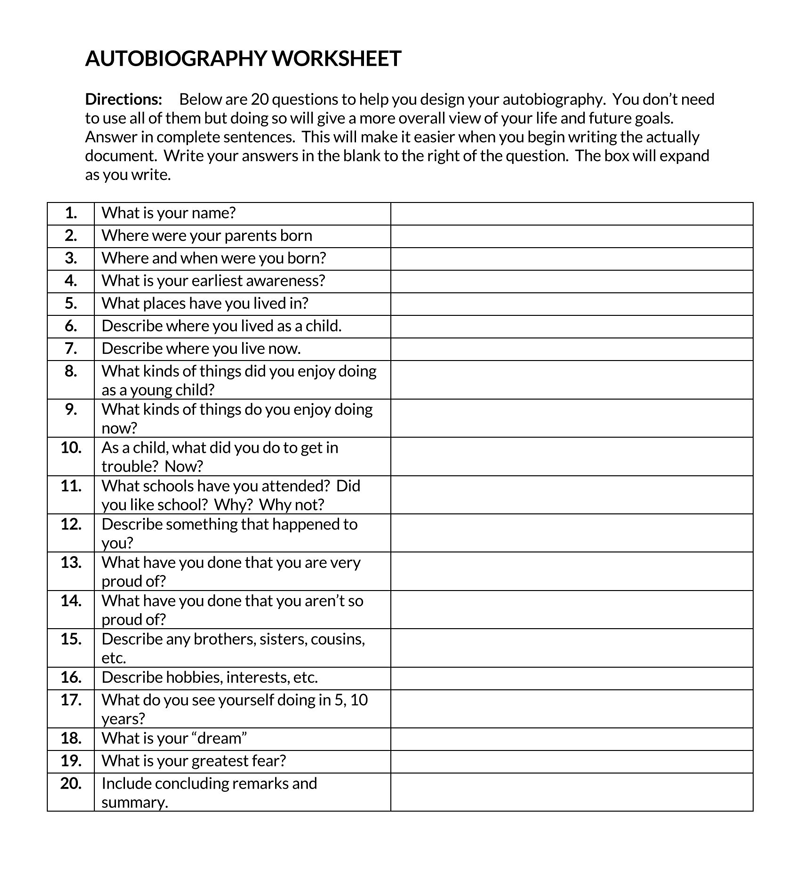
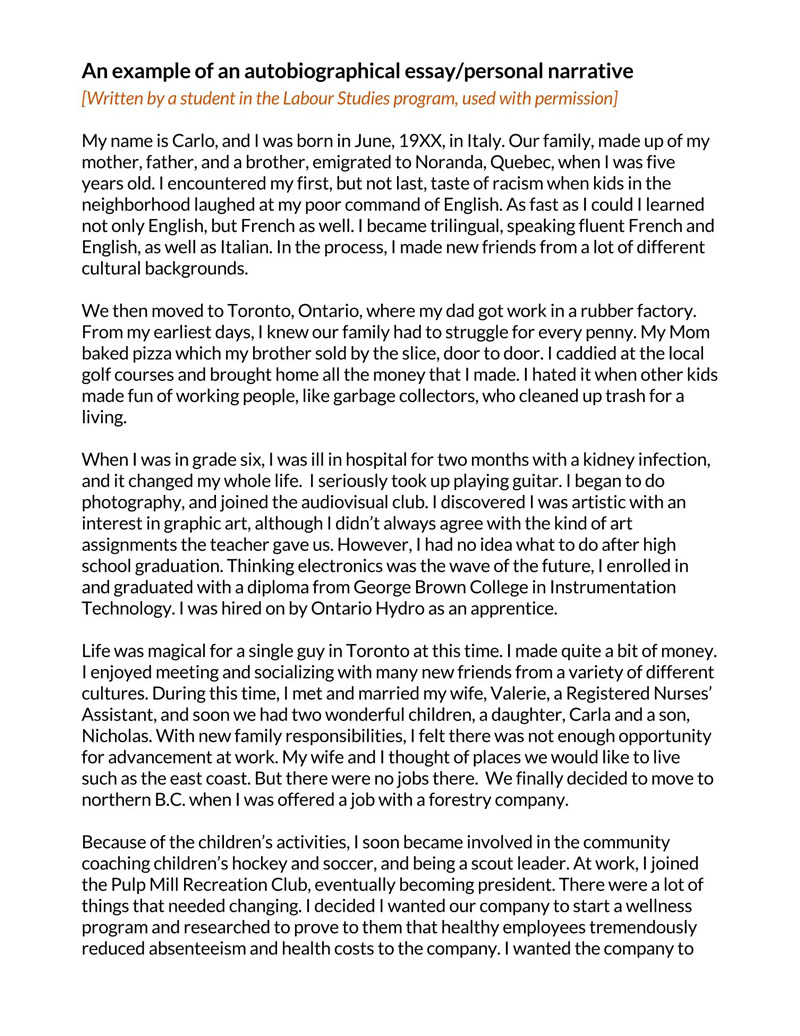
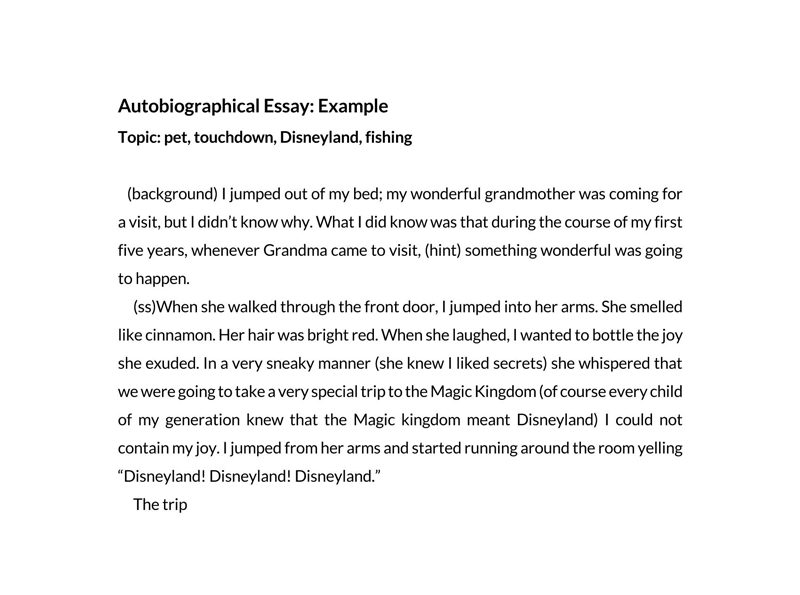
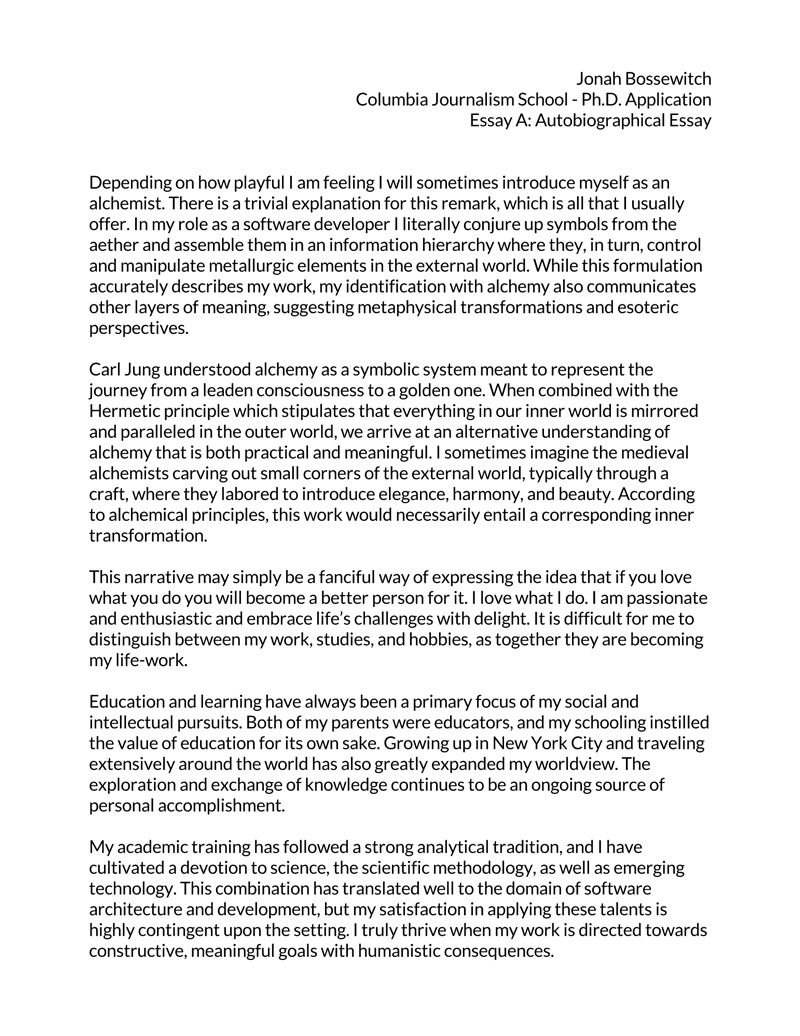
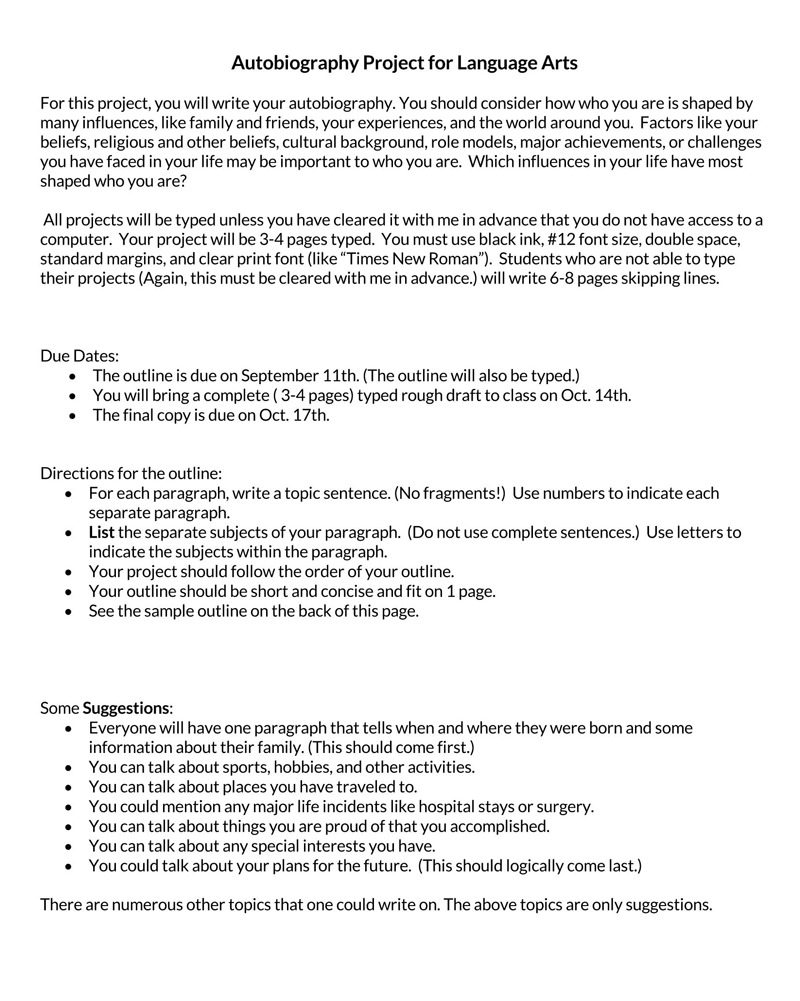
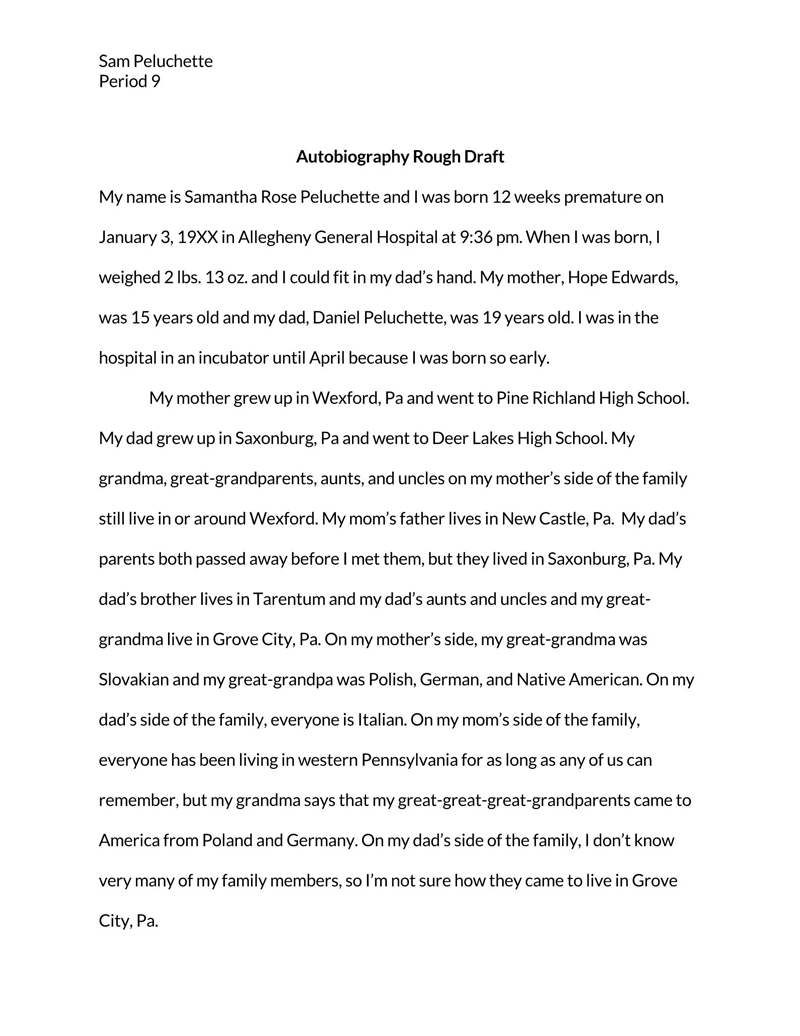
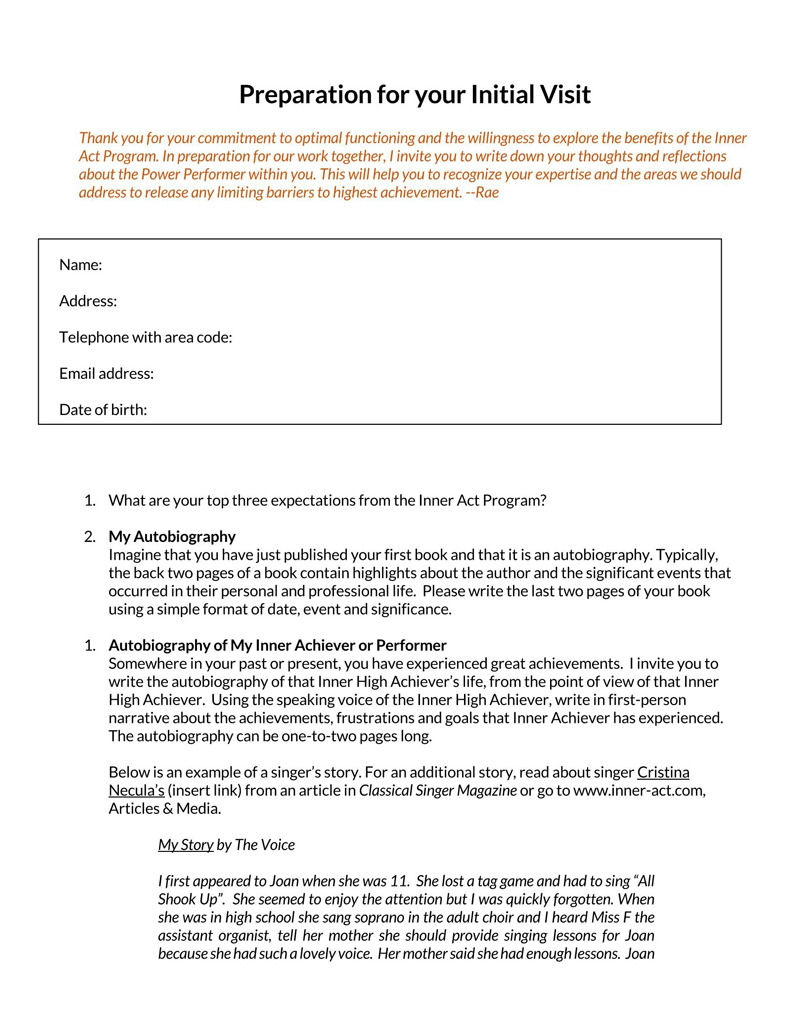

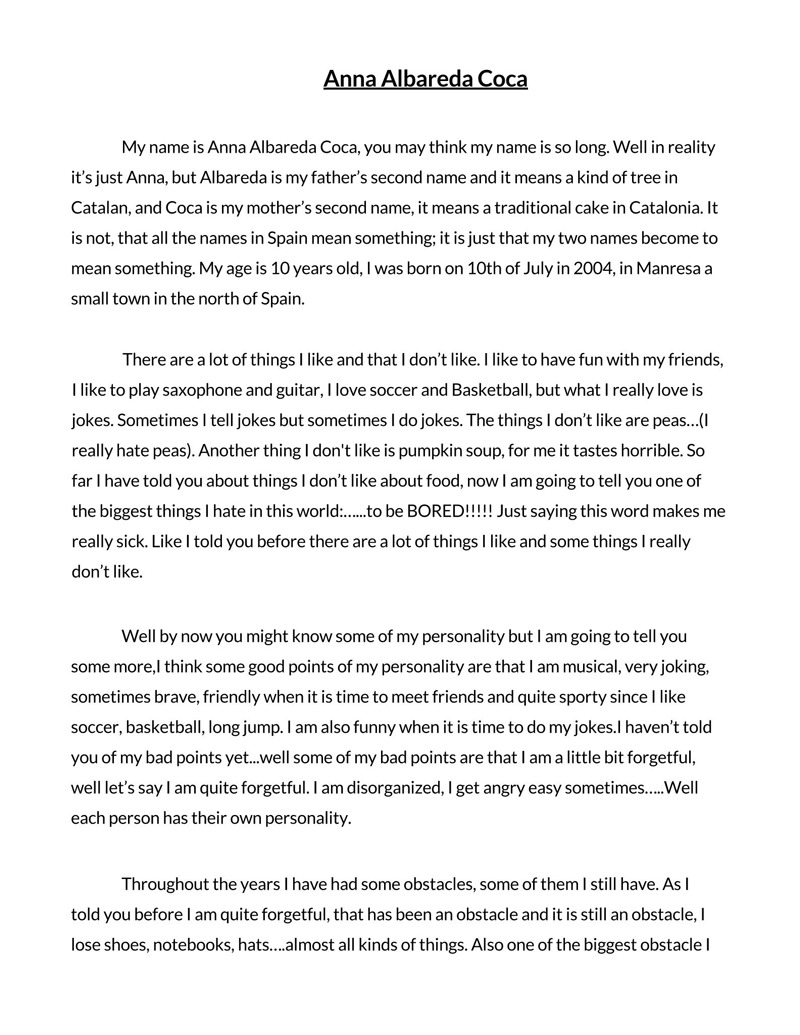
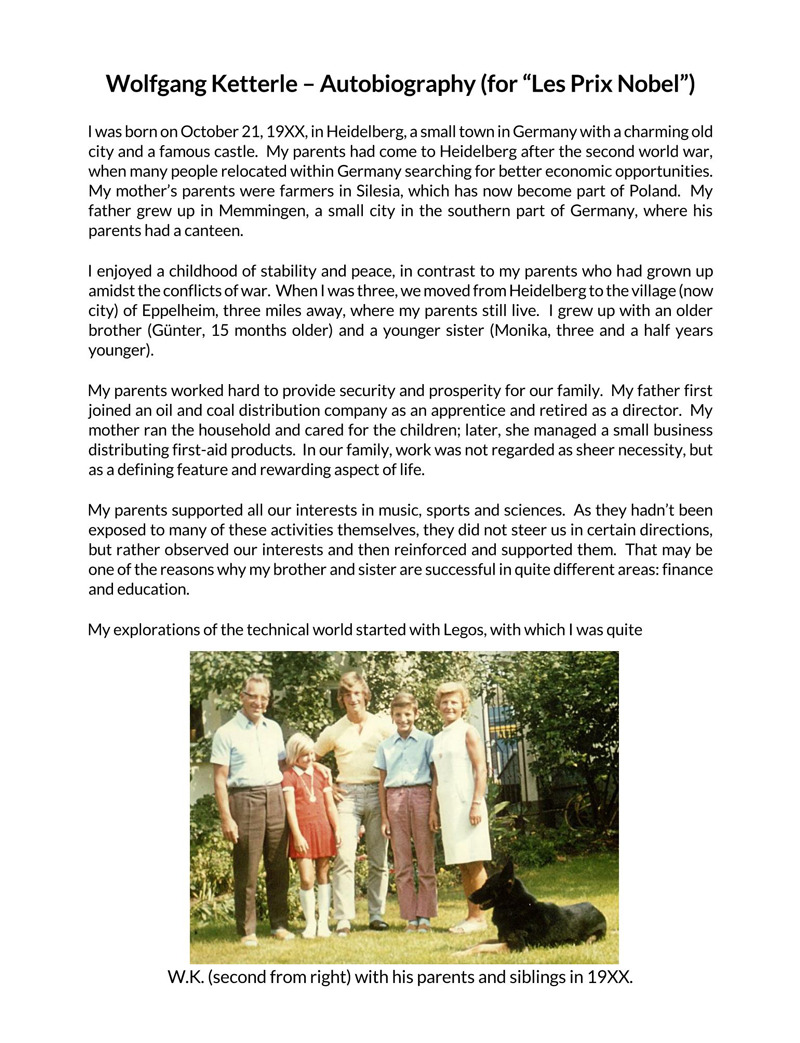
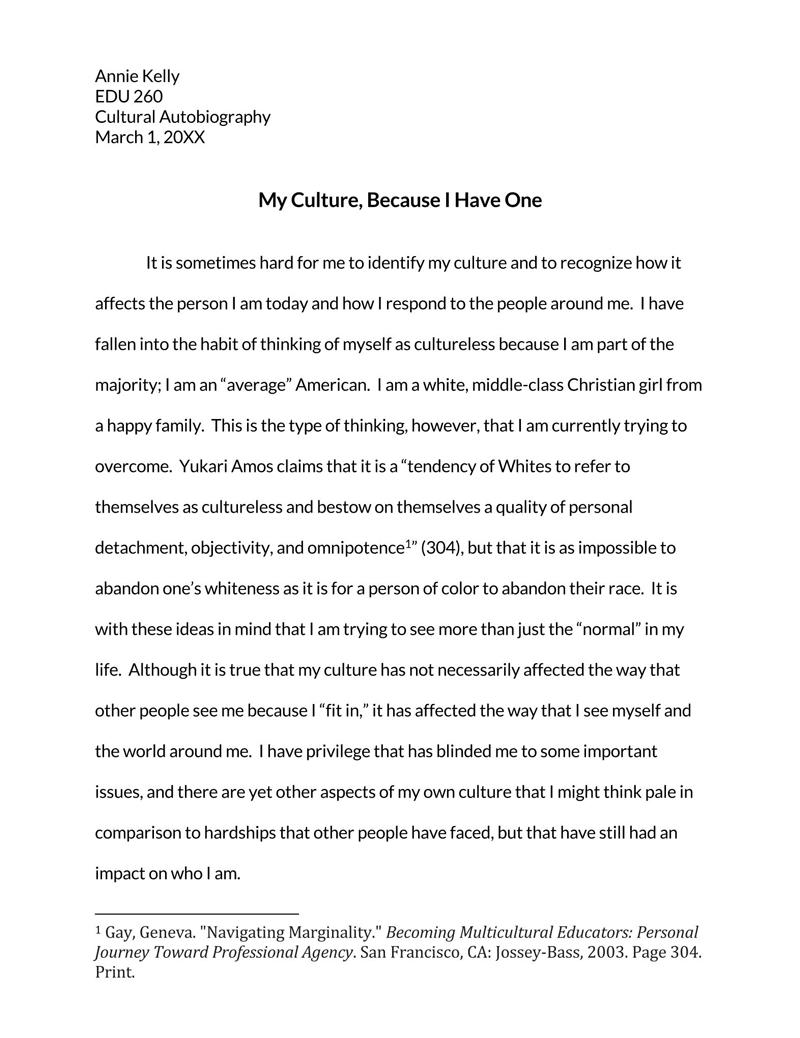
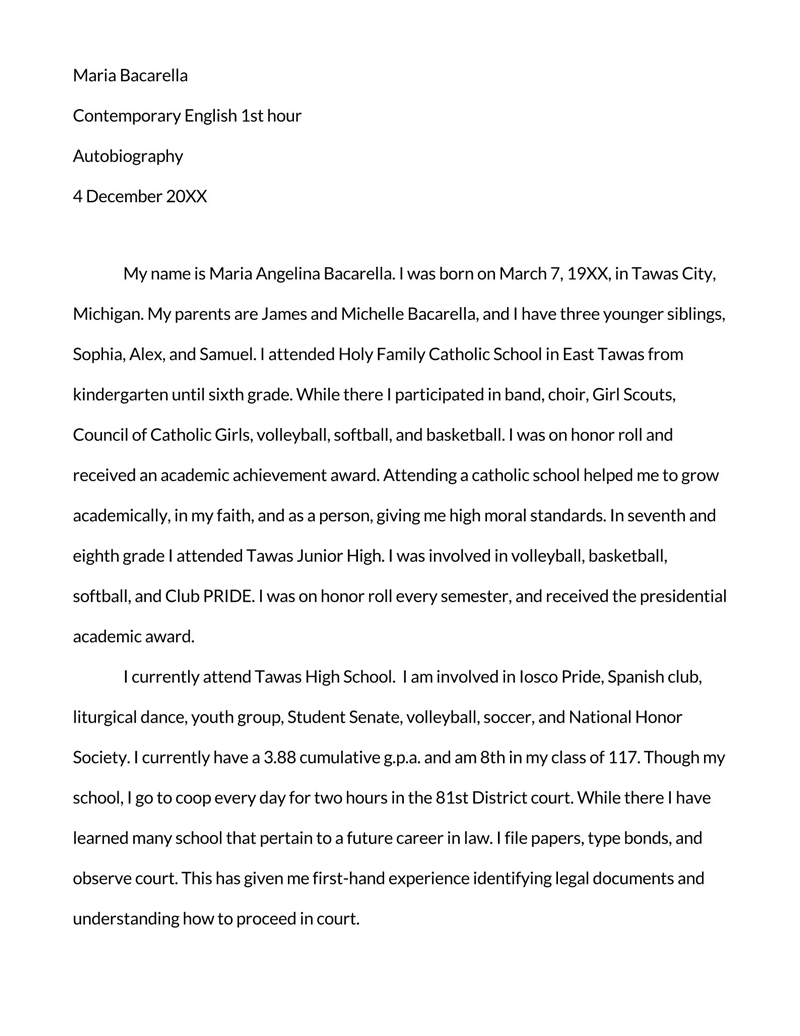
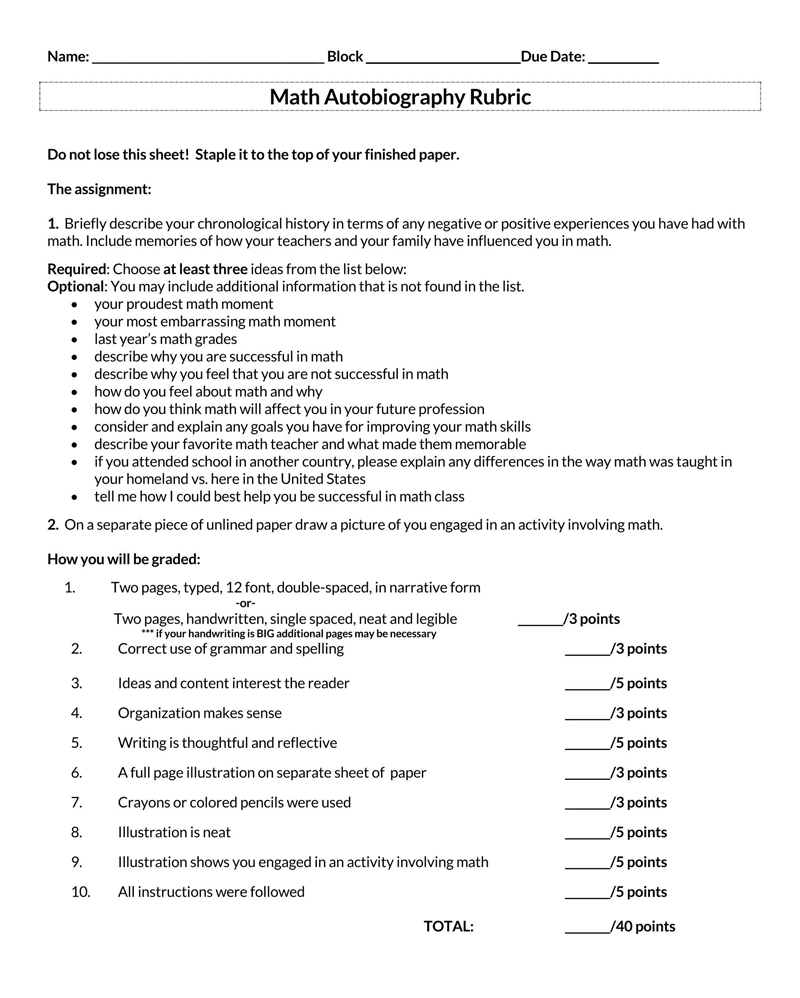
Tips for Writing a Great Autobiography
The aim of any individual when writing an autobiography is to ensure that it impacts the reader. There are various tips that can help an author ensure that the autobiography has the desired impact on audiences. Considering these tips will help the author write a compelling autobiography.
The following tips should be considered when writing an autobiography:
Research popular autobiographies
The author should consider researching popular autobiographies to understand how to structure his/her own. They can also help in familiarising the author with the different types of autobiographical writing styles. The research can help give the author an idea of which experiences to highlight based on the autobiography’s purpose, type, and theme.
Highlight an inspiring comeback story
The autobiography should highlight an inspiring story of adversity and victory. The author should focus on an event, experience, or period of struggle that will be the basis of the narration. Topics such as mental health challenges, abuse, neglect, or loss can be at the center of the author’s message to the reader.
Target cultural themes
Authors with a different cultural background from that of the target audience can opt to have it as their autobiography theme. Culture often makes an interesting read as most readers have very little exposure to most of the world. The author should focus on a unique aspect of the culture, such as its history, beliefs, rituals, customs, and faith. The author’s story should explain the significance of these aspects to the audience to enhance understanding by the reader.
Leverage unique experiences
The author should make use of unique personal or professional experiences to inspire the reader. Highlighting unique pitfalls and disappointments will also help keep the reader hooked on the author’s story. The reader will want to know how the author triumphed over adversity. When highlighting unique experiences, specificity is key to enabling the author to relate with the reader.
Bring your story to life
An autobiography should use description to capture the author’s life story. The author should be open to being vulnerable to bring the reader into his/her world. Expressing emotion using flavor enables an author to use colorful language to provide simple information. This helps keep the autobiography interesting without having to exaggerate narrative details.
Tell the truth
The truth should be at the center of the author’s narrative. It is often more relatable than the classic story of a hero or villain. It also helps the author connect with readers who have faced similar adversities. The willingness of an author to expose his/her strengths and weakness will keep the autobiography genuine, original, and interesting to the reader.
Revise and edit
Once the autobiography is finished, the author should revise and edit it. The revision will help the author ensure that the events and experiences are highlighted logically. The author can also ensure that the thoughts expressed in the autobiography are in line with its theme or purpose. Technical errors such as grammatical mistakes should not be neglected as they can impact how the reader feels about the story.
Do seek feedback
Feedback should be sought from close family or friends to help the author identify gaps or inconsistencies in the autobiography. It also gives the author a glimpse of how readers will receive his/her story. However, the author should be sure to distinguish between helpful criticism and forced judgment by the individual providing feedback. The integrity of the autobiography should not be compromised to suit the unfair judgments of the reader.
Include only relevant details and struggles
The autobiography’s theme and purpose will dictate the details and struggles included. The author can avoid confusion by ensuring that the information shared directly relates to the story. Confused readers are likely to put the book down as readers because they will not spend time trying to connect the dots of the story.
Stop worrying about others
The author should avoid rearranging the details of the autobiography due to the negative opinions of others. The author’s account of events is likely to have a negative effect on others. The story should be generic and specific to retain its authenticity. The author must remember that he/she is not obligated to please others.
Inspire your audience
The author should use a writing style that encourages the audience’s imagination. It should show the audience how the author felt instead of directly expressing the emotion. The way information is framed in an autobiography helps in inspiring the audience. Poor framing of details can leave the audience underwhelmed even when the story’s outcome is positive.
Avoid copying
An autobiography is the author’s account, and therefore copying someone else’s work can make the story lose its originality. Forming a proper writing plan can help ease the drafting of the autobiography. The author should use the unique marketable parts of the story to compel audiences.
Key Takeaways
An autobiography enables an author to narrate his/her life story. It contains factual details about the author’s story. An autobiography should contain a setup, crisis, and resolution. It can be drafted for both personal and public use. The author should consider the theme, purpose, target audience, and timeline when writing an autobiography. The author should be able to distinguish the differences between an autobiography, biography, and memoir.




